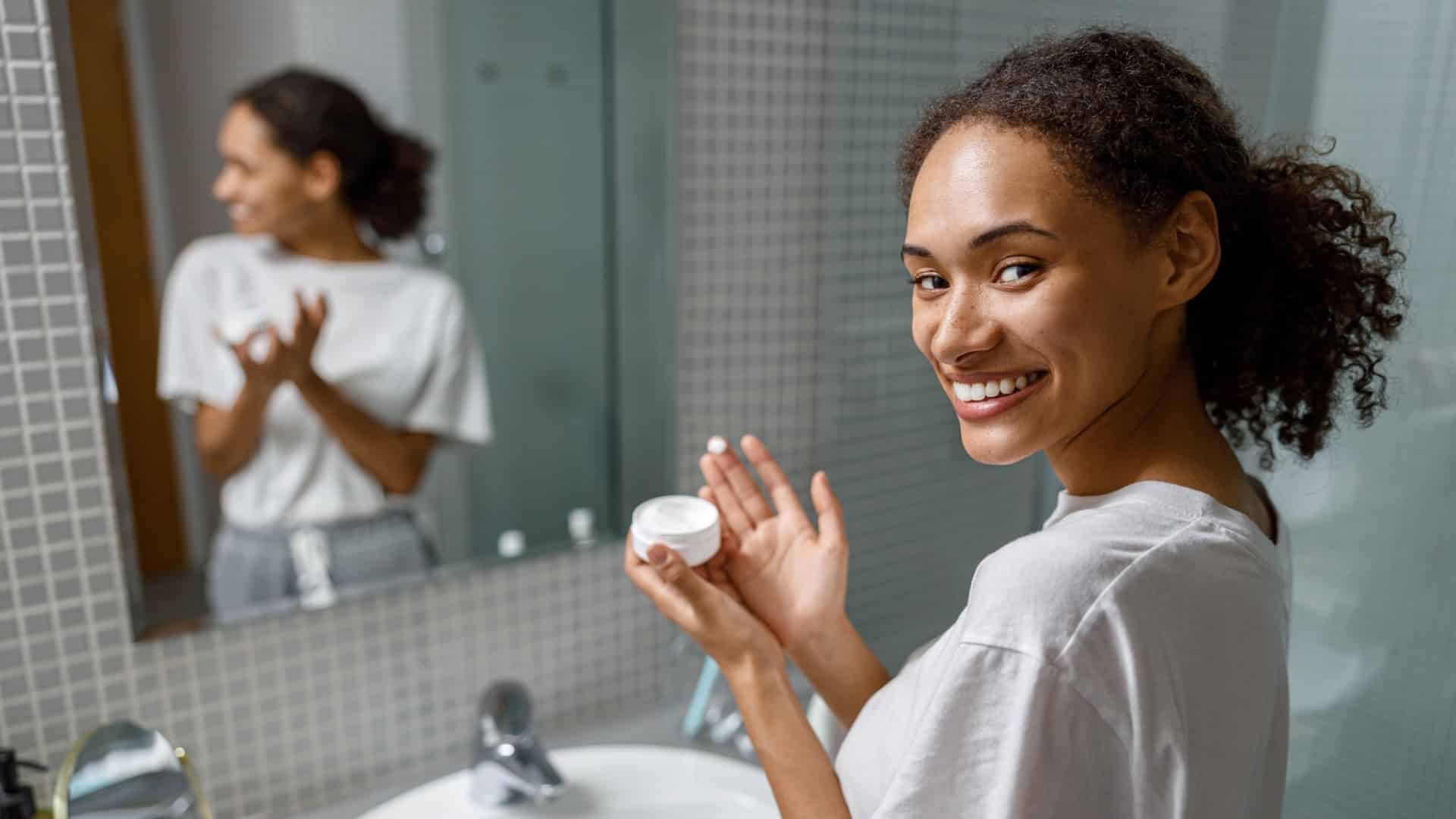The beauty industry is a dazzling world, enticing us with promises of transformation wrapped in exquisite packages. With every glossy advertisement, a vision of perfection beckons, hinting at a more glamorous, confident, and radiant version of ourselves. These campaigns are powerful, carefully crafted to tap into our deepest desires for recognition, acceptance, and self-enhancement. But as the saying goes, not everything that glitters is gold. Beyond the luminous billboards and charismatic endorsements lie truths that the industry often keeps shrouded in mystery.
This sprawling industry, valued in the billions, is built upon the dreams and aspirations of consumers. It thrives on innovation, with new products launching at dizzying speeds, capturing our attention and wallets. Yet, like every other industry, there’s more than meets the eye. Behind the lustrous façade of glamour, several secrets remain carefully tucked away, known only to those who truly pull the strings.
So, what happens when we move past the enchanting allure of fresh fragrances, vibrant palettes, and velvety textures? What truths await discovery when we dare to look beyond the veil? In this exploration, we’ll dive into the lesser-known aspects of the beauty realm, illuminating the corners that often remain in shadows. Join us on this journey as we uncover beauty’s best-kept secrets!

The Illusion of Exclusivity
Luxury and prestige are two terms frequently associated with high-end beauty brands. These brands often showcase their products as the epitome of exclusivity, positioning them as must-haves for the discerning consumer. Yet, beneath this veneer of opulence lies a more straightforward reality: many of these products, while marketed differently, share striking similarities with their less expensive counterparts.
Firstly, the foundation of this illusion often starts at the manufacturing level. Surprisingly, many high-end and drugstore products are produced in the same factories. They sometimes even share similar, if not identical, formulations. The substantial price difference, however, is attributed to branding, packaging, and marketing efforts. It’s a classic case of perception shaping reality. A gold-embossed label, a celebrity endorsement, or a limited-edition tag can significantly inflate a product’s perceived value.
Moreover, while unique ingredients or formulations may occasionally justify higher prices, it’s essential to recognize that the efficacy of a product doesn’t always correlate with its price tag. Two moisturizers, for instance, can provide similar hydration benefits, even if one boasts rare ingredients or claims of groundbreaking technology.
Furthermore, exclusivity is often artificially generated. Limited releases, celebrity collaborations, and influencer partnerships can create a buzz and a sense of urgency, driving consumers to purchase without thorough evaluation. Thus, the allure of the ‘exclusive’ often rests more on psychological factors than on tangible product superiority.

Photo Manipulation & Real Beauty
The beauty industry’s portrayal of perfection has long been under scrutiny. With the rise of digital tools and sophisticated editing software, what the public sees in advertisements and on social media can be far from the untouched reality. The gap between genuine beauty and its digitally-altered representation has grown wider, prompting a pressing conversation about authenticity in the beauty sector.
One of the most pervasive tools in the beauty industry is photo manipulation. This practice can transform an already stunning model into a paragon of impossible standards: poreless skin, impossibly thick hair, and an otherworldly figure. These retouched images not only shape beauty standards but also set unrealistic expectations for consumers, who may strive for a perfection that doesn’t genuinely exist. The dissatisfaction stemming from unmet expectations can affect self-esteem and body image.
Moreover, while many believe they can easily spot a retouched image, advancements in photo-editing technology make alterations almost imperceptible. The subtle enhancements – a slight slimming of the nose, a brightening of the eyes, or a gentle smoothing of the skin – collectively contribute to a significantly altered portrayal of beauty.
However, there’s a growing movement championing real beauty. Brands and individuals alike are pushing for transparency, celebrating flaws, and embracing authenticity. By understanding the extent of photo manipulation in the industry, consumers can better navigate the complex landscape of modern beauty standards.

High Markup & True Product Costs
The beauty industry, known for its glamorous advertisements and celebrity endorsements, holds another secret beneath its polished surface: the surprising disparity between production costs and retail prices. While it’s common for products to be sold at a markup, the extent of this in the beauty world is eye-opening, with some items being marked up as much as 1000% or more. Unpacking this discrepancy provides a clearer perspective on the business behind the beauty.
Firstly, when considering a product’s price tag, it’s essential to understand that the raw materials and production costs often represent only a fraction of the total cost. Packaging, often designed to evoke luxury and exclusivity, can sometimes cost more than the product inside. This deliberate design choice feeds into the perceived value, urging customers to part with their money more willingly.
Marketing and advertising play another significant role in driving up product prices. High-end campaigns featuring A-list celebrities, lush photoshoots, and prime advertising slots don’t come cheap. These expenses are inevitably passed on to the consumer. The rationale? Brands believe that associating their products with luxury, fame, and success justifies the higher price point.
Lastly, brand reputation and perceived value also contribute to the hefty price tags. A brand recognized for luxury and high-quality products can command higher prices based solely on its name. While consumers believe they’re paying for superior quality, in many instances, they’re buying into a brand’s carefully crafted image and story. Recognizing these factors helps in making more informed purchasing decisions.

Ingredients & Their Impacts
Dive deep into any beauty product, and you’re likely to find a complex list of ingredients, some familiar and others less so. These ingredients, while contributing to the efficacy, texture, and fragrance of the products, can sometimes have unintended impacts. Both on the environment and, in some cases, on the user’s skin. By understanding more about these ingredients and their effects, consumers can make more informed choices and navigate the beauty aisles with confidence.
Natural and organic labels are increasingly popular, often perceived as safer and more environmentally friendly. However, the definitions and standards for these terms can vary, leading to a gray area in product claims. While many natural ingredients are indeed gentle and eco-friendly, not all are created equal. Some, in their raw form, can be irritating or even harmful.
On the other end of the spectrum, synthetic ingredients are often vilified. But, not all synthetics are detrimental. Many have been developed to be hypoallergenic, sustainable, and effective. It’s about discerning which ones are beneficial and which to avoid.
Furthermore, the sourcing of ingredients can have environmental implications. Over-harvesting natural components can lead to ecosystem imbalances. On the other hand, manufacturing certain synthetic ingredients can result in considerable carbon footprints.
As beauty enthusiasts, it’s crucial to be ingredient-savvy, understanding not just the benefits they bring to our skin but also their broader impacts. Such knowledge empowers consumers to choose responsibly.

Fast Beauty & Environmental Implications
In recent years, there’s been a rising trend mirroring that of fast fashion—fast beauty. This quick-turnover approach sees brands launching new products at a rapid pace, enticing consumers with the latest beauty trends and innovations. But what seems like a bounty of choices can have significant environmental implications, often going unnoticed by the average consumer.
The rush to frequently release new products often means shorter research and development phases. This can result in formulations that might not be as eco-friendly or sustainable as they could be. The hasty development can overlook sourcing and manufacturing practices that are kinder to the environment.
Packaging, a significant contributor to waste, is another concern. In the race to get products to market, brands might opt for cheaper, non-recyclable packaging, further exacerbating the world’s plastic waste problem. While shimmering palettes and ornate bottles look beautiful on vanity tables, they contribute to landfills when their short lifespan ends.
Additionally, the rapid consumption model encourages consumers to purchase more, leading to higher product wastage. Partially used bottles and palettes often find their way into trash bins, adding to environmental burdens.
To mitigate these impacts, consumers can take proactive measures. Supporting brands that prioritize sustainable practices, minimizing impulsive purchases, and recycling beauty product containers can all make a significant difference. By recognizing the pitfalls of fast beauty, we can start making more informed choices for the planet’s benefit.

Independent Reviews & Influencer Sponsorships
The age of the internet has revolutionized how we shop for beauty products. Beauty influencers, with their vast reach on platforms like YouTube and Instagram, play pivotal roles in shaping beauty choices for many consumers. However, there’s an underside to this influence that not all consumers are aware of: the complex world of influencer sponsorships.
At first glance, an influencer’s review might seem genuine and heartfelt. They might rave about a product’s efficacy, its texture, or its results. Yet, often these endorsements come with undisclosed sponsorships, where brands pay influencers or provide free products for positive reviews. This commercial aspect can sometimes obscure the true performance of a product, with influencers emphasizing the positives while glossing over any negatives.
Furthermore, algorithms on social platforms tend to promote content that generates sales, meaning a genuinely independent review might be harder to come across than one might think. The line between a genuine product recommendation and a paid endorsement has become increasingly blurred in the digital age.
To navigate this landscape, consumers need to develop a discerning eye. Looking for clear sponsorship disclosures, diversifying the sources of product recommendations, and seeking out platforms known for unbiased reviews can help ensure that the information is as genuine as possible. Only by being informed can consumers make beauty choices that truly resonate with their needs and values.
Conclusion
The beauty industry, glamorous and enticing as it is, has layers beneath its shiny surface that are not always as dazzling. It’s a world where marketing can often blur the lines of reality, where product prices don’t always reflect their true costs, and where the rapid pace of trends might overshadow long-term environmental considerations. However, with awareness comes the power to enact change. By understanding the tactics and strategies used by the industry, consumers can make informed choices that align more closely with their personal and ethical values.
It’s essential to remember that beauty is deeply personal. What works for one individual might not work for another, and what one person values can differ greatly from someone else’s priorities. By taking the time to research, understand, and question the products and practices of the beauty world, consumers can ensure that their beauty journey is both fulfilling and conscientious. The ultimate secret of the beauty industry is that true beauty comes from being informed, authentic, and making choices that reflect one’s individuality and values.
















